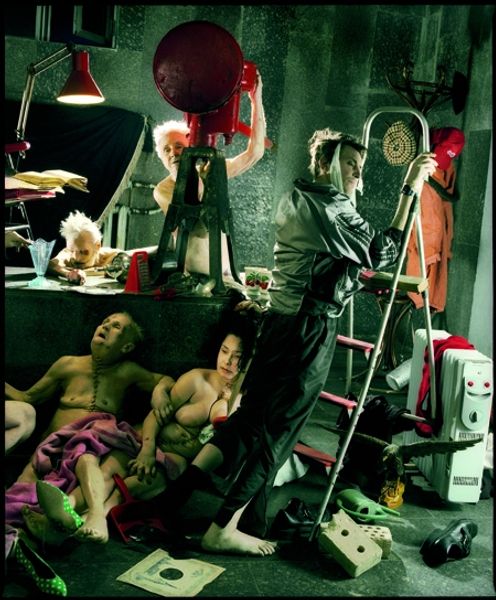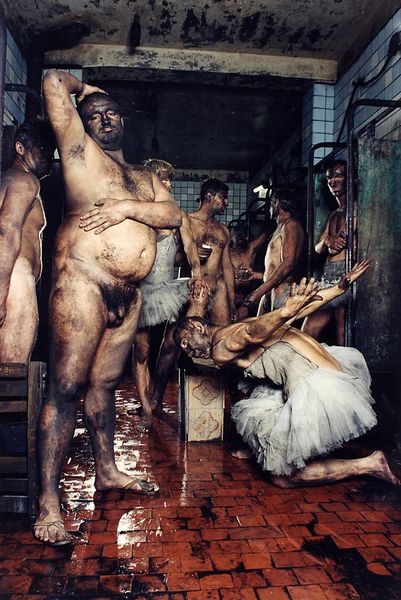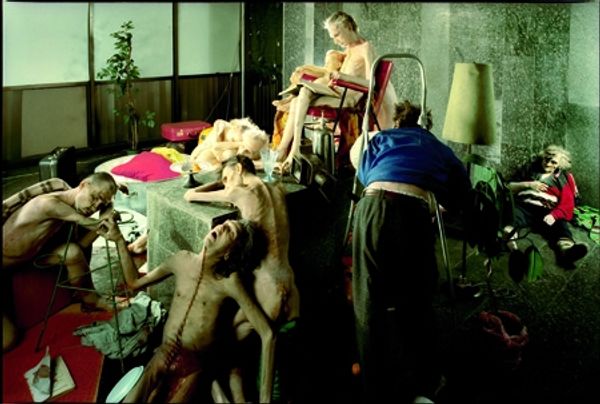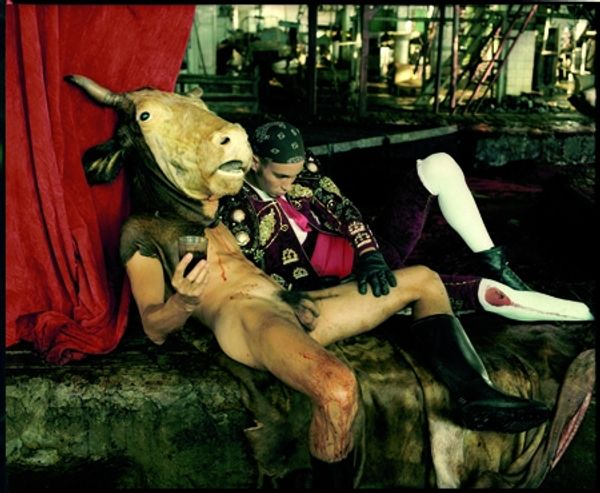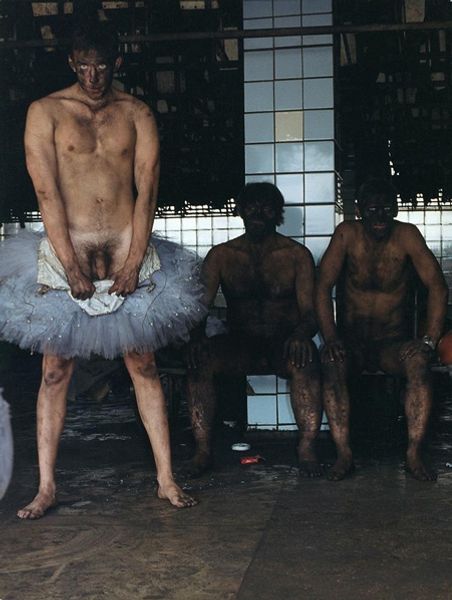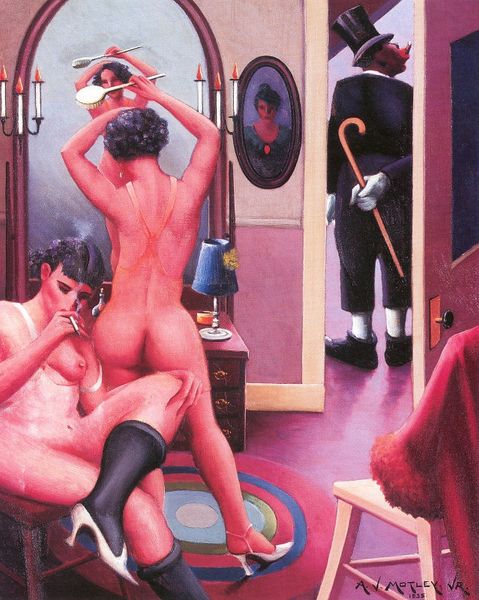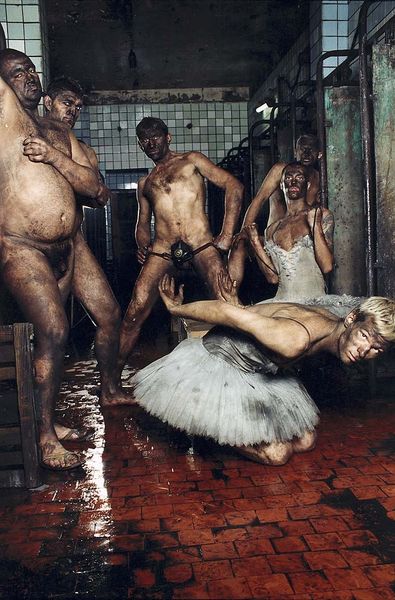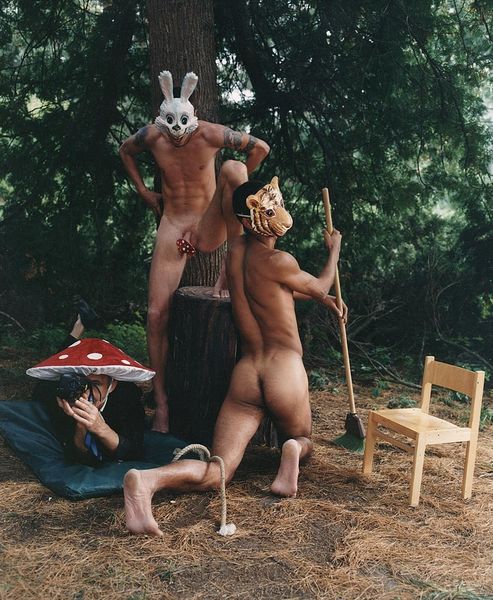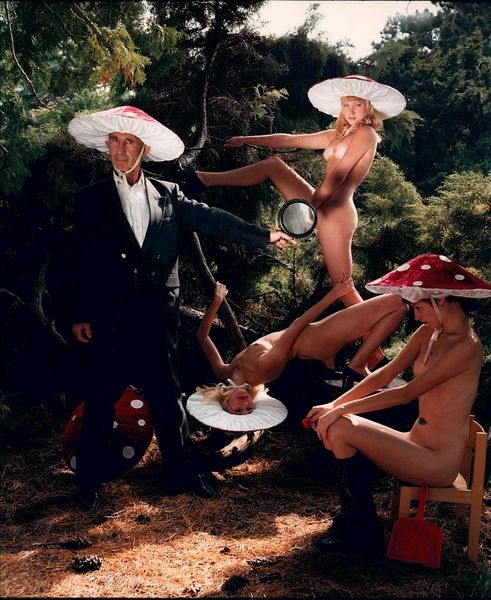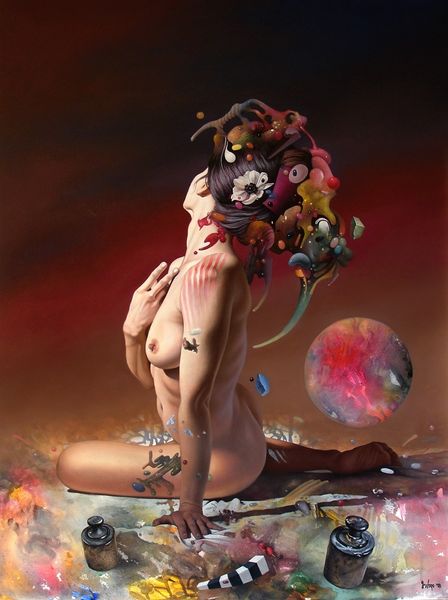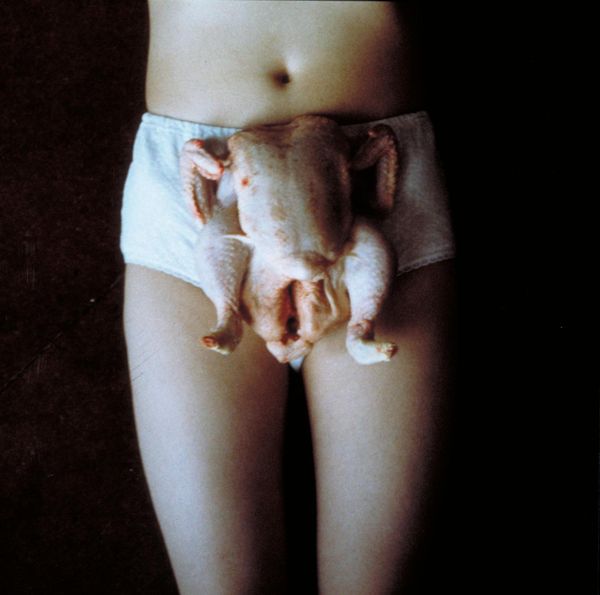
Copyright: Arsen Savadov,Fair Use
Curator: My immediate impression is... unsettling, to say the least. A very still, almost tableau-like composition with the figures all so very...still, but charged with an undeniable tension. Editor: Indeed. What you're observing is Arsen Savadov’s C-print, “Book of the Dead,” created in 2001. Savadov, a Ukrainian artist, works across media but is particularly known for these staged photographic scenes which directly allude to neo-expressionist styles prevalent at the time. Curator: Staged is right. The lighting, the arrangement of the figures...it feels theatrical. There’s something deeply unsettling about these seemingly post-operative bodies intermixed with such childish objects as that pink toy car, almost like some grim satire of...what exactly, I'm not sure. Editor: Precisely! Savadov masterfully plays with that tension. Looking through the lens of art history, the work sparks many discussions about the role of the body in art and how nudity, traditionally used to glorify the figure, is here charged with a new and violent sensibility. What political or societal forces could lead to its decay? Curator: That violent sensibility is spot on. There's a visceral quality, even in a photograph. All those scarred torsos… the pallid skin. What does that mean to use photography to capture something almost traditionally "painterly"? Almost like you have a scene emerging right out of Bacon, you know? Francis Bacon! Editor: An interesting reflection indeed! His decision to use staged photography pushes our perceptions around reality versus performance. The "Book of the Dead" suggests not only the decay of individuals, but also societal or even ideological corruption, if we position its figures and symbolic elements properly within the framework of the social history and turbulent politics in post-Soviet Ukraine. Curator: Ideological corruption. Absolutely. That would add a very personal element, and it gives this entire "stage" a more intimate angle of seeing bodies as records or pages from some unseen, perhaps, unwelcome future… Like the old days of religious art, warning you from being bad! In a new avant garde setting...it almost tickles me. Editor: Exactly! It's almost too much, but that excess generates the question—how have societal factors conditioned such potent imagery? What unspoken expectations of art does "Book of the Dead" openly subvert? Curator: I guess, on closer examination, Savadov pulls us into that tension on purpose, prompting a dialogue with the art and a quiet questioning to us as its observers. Editor: Indeed, an encounter that challenges expectations on various social and aesthetic levels, proving that in many ways it goes beyond the purely personal.
Comments
No comments
Be the first to comment and join the conversation on the ultimate creative platform.
